Looking after your musical instruments
Instrument Care
Swansea Music Service helps young people learn music in lots of schools around Swansea. We also have a special music hub at Bishop Gore School where children can come together to play and learn music. Pupils across the county can come together to have fun while learning to play music, like the piano, guitar, or drums. They can make new friends, get better at music, and feel proud of what they can achieve.
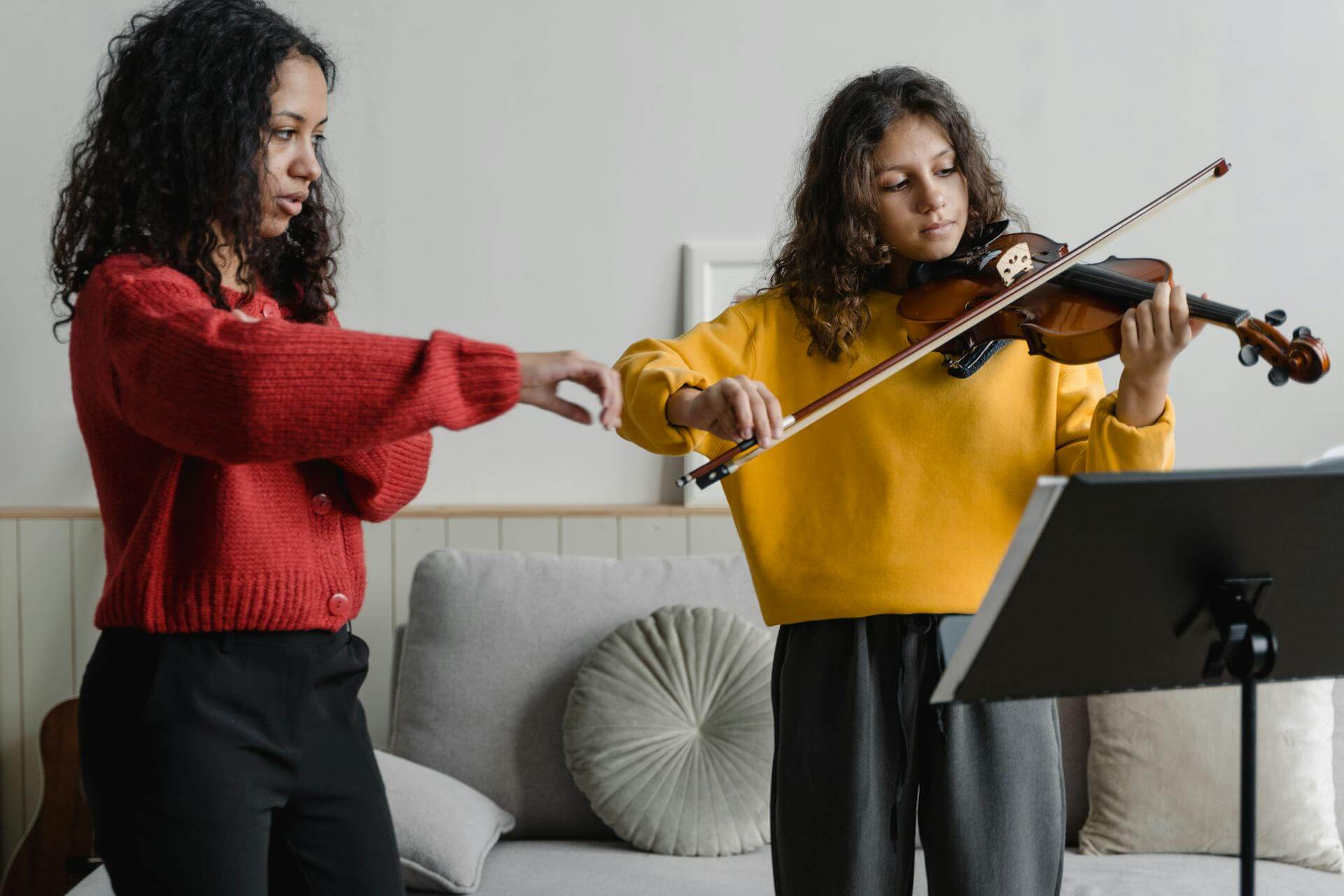
5 super simple tips to help you practice
5 most useful tips on how to practice with any musical instrument.
1. Practice A Little Every Day
Just as brushing your teeth every morning and evening is better than doing it once in a while; even 10-minutes of practice with your music helps your fingers and brain remember what they’re meant to be doing.
2. Go Slow To Start
Like a turtle, play slowly and keep at it – even as the world around you is in a rush. That’s the best way to be sure you don’t trip-over. Going slow but steady with your practice helps you learn the right way and is less pressured.
3. Pick One Instrument To Get Better At
Instead of trying to master every instrument all at once. Just try to stick to one instrument until you are confident with it; and instead of multiple songs – stick to one song or one tricky part—like a puzzle piece. Finish that piece before the next, and before long you will have the whole puzzle completed.
4. Make It Fun
Play songs you like, songs that resonate with you, songs that you enjoy. If it helps, pretend you’re on stage or in a movie. You’re the number one star of your own show, and having fun makes practice feel like play.
5. Be Kind To Yourself
Everyone makes mistakes. If you make a mistake, that’s okay! Don’t be harsh on yourself; everyone messes up -a lot. The trick is to not put yourself down. Smile, laugh, try again, and keep going. If you can accept that mistakes are just a part of learning, and even the greatest musicians make mistakes, you’ll get better.
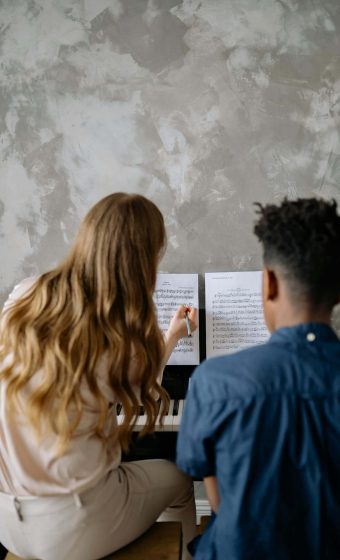

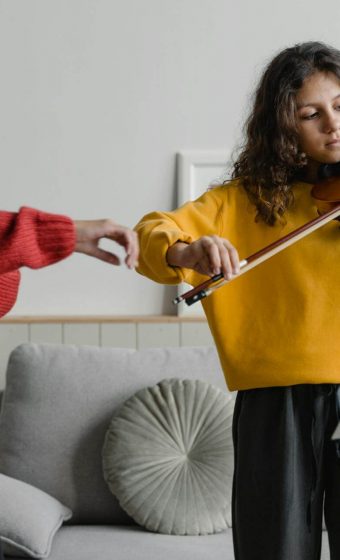
Violin Care
How to Rosin Your Bow
Rosining a bow involves rubbing a special cake of rosin (a sticky tree sap) onto the bow hair to help it grip the strings of the instrument and thereby create sound. Without rosin, the bow would slide around and make almost no noise or a harsh noise. It’s like giving your bow the “grip” it needs to sing properly on the strings.
Here are 2 simple tips for looking after a violin:
1. Keep Your Instrument In Its Case
When you’re not practicing or playing, always put your instrument back in its case to protect it from bumps, dust, and changes in temperature.
2. Clean Your Instrument Gently
After practicing and playing your instrument, use a soft cloth to wipe off any rosin dust, grease, or fingerprints. This keeps your violin clean, shiny and in good working condition for longer.
Setting up your woodwind instrument
Quick tips for setting up woodwind instruments.
Here are some quick tips for setting up woodwind instruments:
1. Be gentle with joints – twist, snap, or connect pieces together slowly and gently, as they should be, not forcefully and not in a hurry; that way you won’t damage the cork or keys.
2. Use cork grease – if your instrument has a cork and it’s hard to fit, add a little cork grease to help the parts slide together easily.
3. Check alignment – line up the keys of your woodwind instrument properly. For example, on a clarinet, line up the bridge key; so everything works smoothly.
4. Keep it clean – make maintenance a part of your routine; ensure the mouthpiece is clean before playing, and wipe down moisture after you finish, to keep everything fresh.
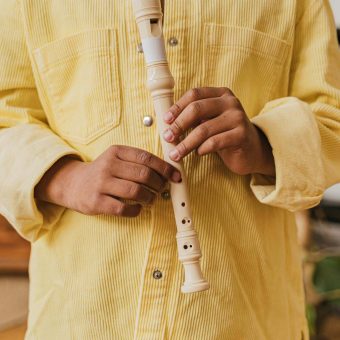
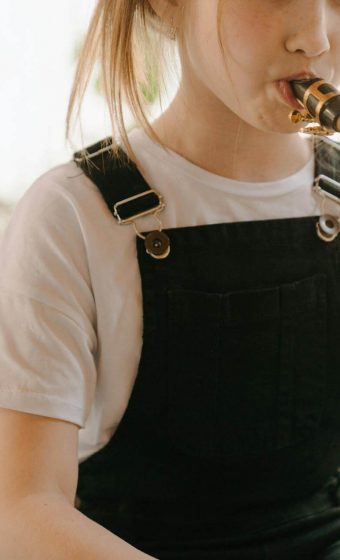
Valved Brass Instruments
How to Oil a Valve
Oiling your brass instrument’s valves helps them move fast and smooth!
Take out one valve at a time – so you don’t mix them up. Add a few drops of valve oil on the correct part of the valve, be careful that it’s not too much! Carefully put the valve back the same way it came out. Press the valve a few times to spread the oil. Do this every few days to keep your instrument happy and ready to play.
How often should I oil my brass instrument’s valves?
You should oil your brass instrument’s valves every 2-3 days if you’re playing regularly. If the valves start feeling slow or sticky, that’s a sign they need oiling. A little oil keeps everything moving smoothly and helps your instrument sound its best.
What should I do if the valves are still sticking after oiling?
Follow your cleaning and oiling process as you did before; one-by-one wiping the valves clean of any old oil or dirt, then re-oil and re-insert.
Still stuck? – ask a music teacher, the Swansea Music Service, or take it to your local music shop. Sometimes valves just need a little cleaning and care, but if they keep sticking, it’s best to get some expert advice and help so you don’t accidently damage them.
Set up your harp with care
How to Set Up a Harp
To set up a harp, first place it gently in a safe, quiet spot where it won’t get bumped — ideally on a carpet or rug to stop it from sliding. Sit the harp on its base with the column upright and the soundboard facing you. Make sure the legs (if it has them) are steady, and use a stool or adjustable chair so you’re sitting at the right height. The top of the harp should lean slightly against your right shoulder when you are sitting comfortably.
Next, check the tuning. Harps have lots of strings, and they can go out of tune easily. Use a tuner and tuning key to gently adjust each string to the correct note. Be patient, small turns go a long way! If your harp has levers or pedals, make sure they’re all in the correct starting position (usually up or flat). Once the harp is tuned and steady, you’re ready to start playing the instrument with clean hands and gentle fingers!
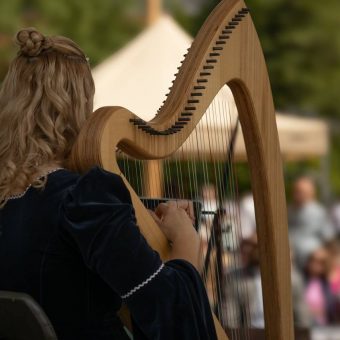

Acoustic and Electric Guitars
How to Tune a Guitar
Here’s some simple tips on how to tune a guitar:
1. Know Your Strings
From the thickest to the thinnest string, the notes are: E – A – D – G – B – E. You can remember the strings with a phrase, such as: Every Angry Dog Growls Barks Eats!
2. Use a Tuner
Grab a clip-on tuner or a tuning app for your phone. Pluck one string at a time and watch the tuner; the tuner will tell you if the note is too low (flat) or too high (sharp).
3. Turn the Peg Slowly
Tighten the peg to make the note higher, loosen and it will make the note lower. Go slowly and always re-check after each additional string.
4. Tune All Six Strings
After all six strings are tuned, play a chord (like G or E minor) to hear how nice it sounds when everything is in tune; make minor changes if needed.
Top Tip: You should tune your guitar before you play, every time. It will make your music sound even more awesome!